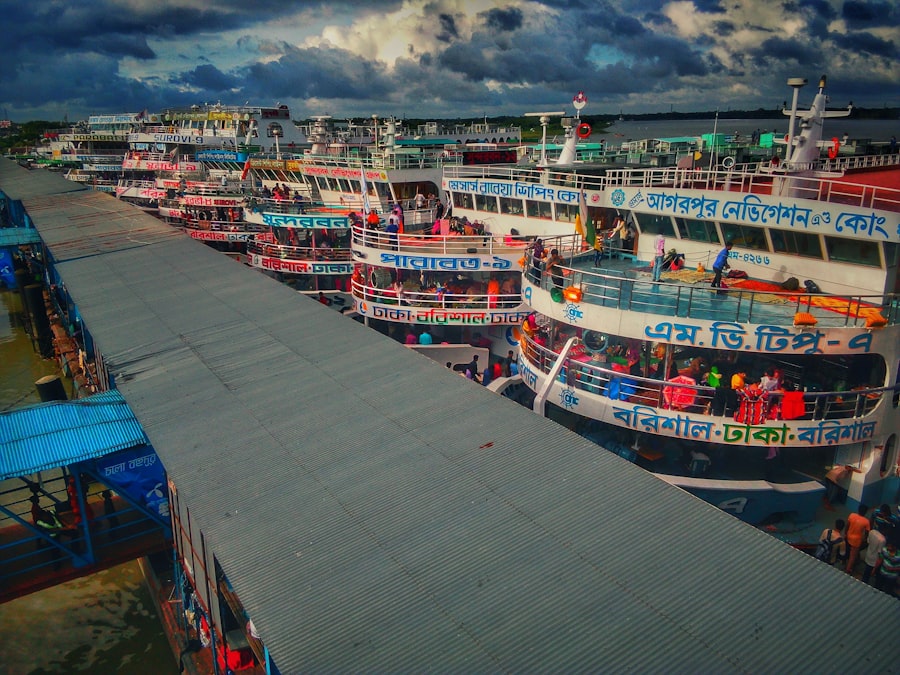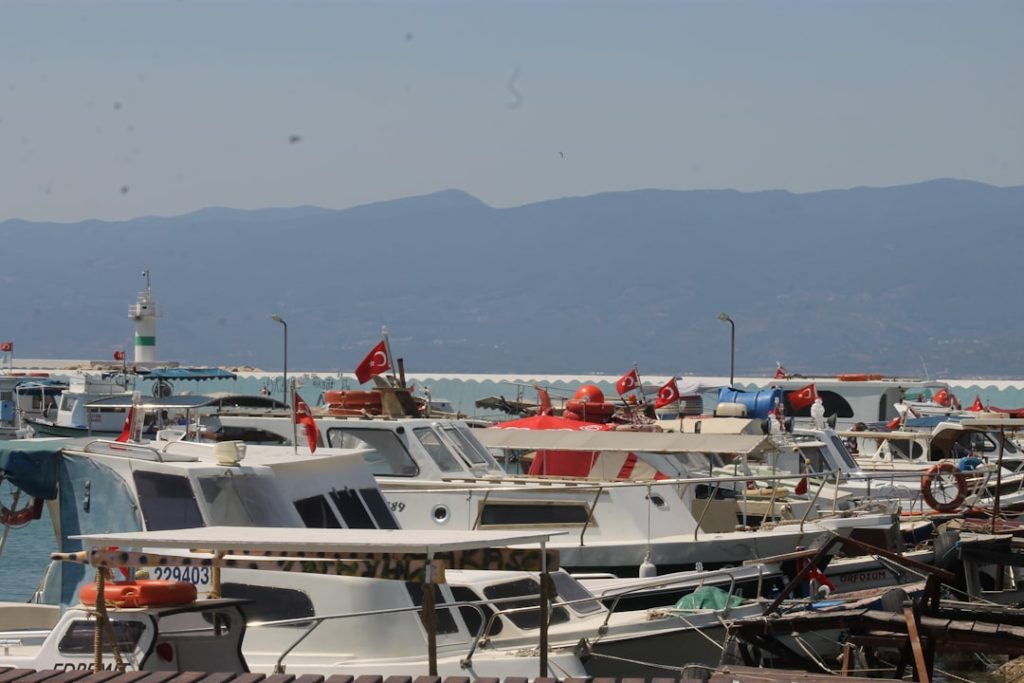The recreational boat market encompasses a diverse range of vessels designed for leisure activities on water, including fishing, sailing, cruising, and water sports. This sector has evolved significantly over the years, driven by advancements in technology, changing consumer preferences, and a growing appreciation for outdoor activities. The market includes various types of boats, such as motorboats, sailboats, personal watercraft, and yachts, catering to a wide array of interests and budgets.
As of 2023, the global recreational boating industry is valued in the billions, reflecting its importance not only as a leisure activity but also as a significant contributor to local economies and tourism. The recreational boat market is characterized by its dynamic nature, influenced by factors such as economic conditions, technological innovations, and shifts in consumer behavior. The industry has seen a surge in participation rates, particularly among younger generations who are increasingly drawn to outdoor experiences.
This growing interest in recreational boating is not merely a trend; it represents a fundamental shift in how people engage with nature and leisure activities. As more individuals seek to escape the hustle and bustle of urban life, the allure of boating as a means of relaxation and adventure continues to gain traction.
Key Takeaways
- Recreational boating is experiencing increased popularity worldwide, driven by lifestyle and leisure trends.
- Innovations in boat design and technology are enhancing performance, safety, and user experience.
- The industry is focusing more on environmental sustainability, adopting eco-friendly materials and practices.
- New markets and diverse demographics are expanding the recreational boating customer base.
- Despite COVID-19 challenges, the market shows strong future growth potential and resilience.
Growing Popularity of Recreational Boating
The popularity of recreational boating has witnessed a remarkable upswing in recent years, fueled by a combination of factors that resonate with modern lifestyles. One significant driver is the increasing desire for outdoor experiences that promote well-being and mental health. Boating offers an escape from daily stressors, allowing individuals and families to connect with nature while enjoying quality time together.
This trend is particularly evident among millennials and Gen Z, who prioritize experiences over material possessions and are more inclined to invest in activities that foster connection and adventure. Moreover, the rise of social media has played a pivotal role in popularizing recreational boating. Platforms like Instagram and TikTok have become showcases for stunning boating experiences, inspiring users to share their adventures on the water.
This visual storytelling not only highlights the beauty of boating but also creates a sense of community among enthusiasts. As people see their peers enjoying boating activities, they are more likely to consider it as a viable option for their own leisure pursuits. The influence of social media has effectively transformed recreational boating into a lifestyle choice that appeals to a broader audience.
Current Trends in Recreational Boat Design and Technology

The design and technology of recreational boats have undergone significant transformations, reflecting advancements in materials, engineering, and consumer preferences. One notable trend is the increasing use of lightweight materials such as fiberglass and carbon fiber, which enhance performance while reducing fuel consumption. These materials not only improve speed and maneuverability but also contribute to the overall efficiency of boats, making them more appealing to environmentally conscious consumers.
In addition to material innovations, technological advancements have revolutionized the way boats are equipped and operated. The integration of smart technology has become commonplace, with features such as GPS navigation systems, autopilot capabilities, and advanced communication tools enhancing the overall boating experience. For instance, many modern boats now come equipped with touchscreen displays that provide real-time data on weather conditions, navigation routes, and engine performance.
This level of connectivity allows boaters to make informed decisions while on the water, ultimately enhancing safety and enjoyment. Another emerging trend is the focus on multifunctional designs that cater to diverse activities. Manufacturers are increasingly creating boats that can seamlessly transition between different uses—such as fishing during the day and entertaining guests in the evening—without compromising on performance or comfort.
This versatility appeals to consumers who seek value in their purchases and want boats that can adapt to various recreational needs.
Environmental Sustainability in the Recreational Boat Industry
| Metric | Description | Current Industry Average | Target/Goal | Measurement Unit |
|---|---|---|---|---|
| Carbon Emissions per Boat | Average CO2 emissions produced by recreational boats annually | 2.5 metric tons | 1.0 metric ton by 2030 | Metric tons CO2/year |
| Use of Sustainable Materials | Percentage of boats manufactured using recycled or eco-friendly materials | 15% | 50% by 2028 | Percentage (%) |
| Fuel Efficiency | Average fuel consumption per nautical mile | 0.8 gallons/nm | 0.5 gallons/nm by 2025 | Gallons per nautical mile |
| Wastewater Treatment | Percentage of boats equipped with onboard wastewater treatment systems | 30% | 75% by 2030 | Percentage (%) |
| Noise Pollution Reduction | Average decibel reduction in new boat engines compared to 2010 models | 10 dB reduction | 20 dB reduction by 2027 | Decibels (dB) |
| Electric/Hybrid Boat Market Share | Percentage of new recreational boats sold that are electric or hybrid | 8% | 30% by 2030 | Percentage (%) |
| Recycling Rate of End-of-Life Boats | Percentage of boats recycled or repurposed at end of life | 20% | 60% by 2035 | Percentage (%) |
As environmental concerns continue to rise globally, the recreational boat industry is increasingly prioritizing sustainability in its practices and products. Boat manufacturers are exploring eco-friendly materials and production methods that minimize environmental impact. For example, some companies are investing in biodegradable composites and recycled materials for boat construction, reducing reliance on traditional plastics and other non-renewable resources.
Additionally, there is a growing emphasis on developing cleaner propulsion systems. Electric and hybrid engines are gaining traction within the industry as consumers become more aware of their carbon footprints. These alternative power sources not only reduce emissions but also offer quieter operation, enhancing the overall boating experience by minimizing noise pollution on the water.
Companies like Torqeedo have pioneered electric outboard motors that provide efficient power without the environmental drawbacks associated with traditional gasoline engines. Furthermore, initiatives aimed at protecting marine ecosystems are becoming integral to the recreational boating community. Organizations dedicated to conservation efforts are collaborating with boat manufacturers to promote responsible boating practices that safeguard waterways and wildlife habitats.
This includes advocating for clean boating certifications and encouraging boaters to participate in cleanup events that help preserve the natural beauty of lakes, rivers, and oceans.
Emerging Markets and Demographics in Recreational Boating
The recreational boating market is witnessing significant growth in emerging markets where access to waterways is expanding alongside rising disposable incomes. Countries in Southeast Asia, South America, and parts of Africa are experiencing increased interest in recreational boating as urbanization leads to greater access to lakes and coastal areas. In these regions, local governments are investing in infrastructure such as marinas and boat ramps to support this burgeoning interest.
Demographically, the profile of recreational boaters is evolving. Traditionally dominated by older generations, the market is now seeing an influx of younger participants who are eager to embrace boating as part of their lifestyle. This shift is accompanied by changing preferences; younger boaters often prioritize experiences that emphasize adventure and social interaction over traditional notions of luxury associated with boating.
As a result, manufacturers are adapting their offerings to cater to this new demographic by creating more affordable entry-level boats that appeal to first-time buyers. Moreover, diversity within the boating community is becoming increasingly recognized as an essential aspect of growth. Efforts are being made to engage underrepresented groups in recreational boating through outreach programs and initiatives aimed at fostering inclusivity.
By promoting access to boating for individuals from various backgrounds, the industry can tap into new markets while enriching the overall culture of recreational boating.
Impact of COVID-19 on the Recreational Boat Market

The COVID-19 pandemic had a profound impact on various industries worldwide, including recreational boating. As lockdowns were implemented and social distancing measures became the norm, many individuals sought safe outdoor activities that allowed them to escape confinement while adhering to health guidelines. Boating emerged as an ideal solution—offering a way for families and friends to gather while maintaining physical distance from others.
This surge in interest led to unprecedented sales figures for boats during the pandemic years. According to industry reports, boat sales reached record highs in 2020 and 2021 as consumers invested in recreational vehicles that provided opportunities for safe leisure activities. The National Marine Manufacturers Association (NMMA) reported that new powerboat sales increased by over 30% during this period compared to previous years.
However, the pandemic also presented challenges for the industry. Supply chain disruptions affected production timelines and availability of key components needed for boat manufacturing. Additionally, many boat shows and events were canceled or postponed, limiting opportunities for manufacturers to showcase their products directly to consumers.
Despite these hurdles, the overall resilience of the recreational boat market was evident as it adapted to changing circumstances.
Future Outlook for the Recreational Boat Market
Looking ahead, the future of the recreational boat market appears promising as trends toward outdoor recreation continue to gain momentum. The increasing focus on health and wellness is likely to sustain interest in activities like boating that promote physical activity and mental well-being. As more people recognize the benefits of spending time on the water—whether through fishing, sailing, or simply cruising—demand for recreational boats is expected to remain strong.
Technological advancements will continue to shape the industry as manufacturers invest in research and development aimed at enhancing performance and sustainability. Innovations such as autonomous boating technology may soon become commonplace, allowing for safer navigation while providing users with more leisure time on board. Additionally, advancements in battery technology will likely lead to longer-lasting electric propulsion systems that further reduce environmental impact.
Emerging markets will play a crucial role in driving growth within the recreational boat sector. As access to waterways improves globally and disposable incomes rise in developing regions, new opportunities will arise for manufacturers looking to expand their reach. By tailoring products to meet local preferences and needs—such as smaller boats suitable for inland waterways—companies can capitalize on this growing demand.
The Continued Growth of Recreational Boating
The recreational boat market stands at an exciting crossroads characterized by growth potential driven by evolving consumer preferences, technological advancements, and a commitment to sustainability. As more individuals seek outdoor experiences that foster connection with nature and loved ones, recreational boating will likely remain a favored pastime across generations. The industry’s ability to adapt to changing demographics while embracing innovation will be key factors in sustaining its upward trajectory.
With emerging markets poised for expansion and an increasing emphasis on environmental responsibility shaping product development, the future looks bright for recreational boating enthusiasts worldwide. As we navigate this evolving landscape together—whether through thrilling adventures on open waters or quiet moments spent fishing at dawn—the enduring appeal of recreational boating will continue to thrive.


